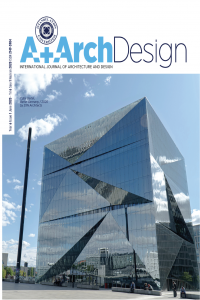
A+Arch Design International Journal of Architecture and Design
Yazarlar: ["Gencay ÇUBUK"]
Konular:-
Anahtar Kelimeler:Surrealist architecture,Surrealism,Spatial identity,Contemporary architecture
Özet: The article is shaped around the questions of how the conceptual relationships between the avant-garde essences that contribute to the formation process of spatial identity diversify and what spatial potentials they have. In this context, prominent avant-garde themes are discussed through the way they relate to each other and potentials are discussed. Examining the avant-garde movement in a spatial context requires evaluating the palette of hybrid concept sets that can mediate the development of architectural productions. In the study, the avant-garde movement is examined in two basic steps. The first set of fig- ures includes Baudelaire, Lautreamont, Cheval, Gaudi, Rousseau, Chirico, Duchamp, Picasso, Schwitters, Freud, Breton, Apollinaire, Magritte, Aragon, Tzara, Ernst, Kiesler, Dali, Lefebvre, Bataille, Benjamin, La- can, Deleuze, and Guattari. It is related with how Tanguy, Matta, Brassai, Delvaux, Maddox, Cornell and Agar’s productions, mainly painting, sculpture and interior architecture, bring the avant-garde approach to the art environment and, accordingly, contribute to the transformation of spatial identity construction in the artistic context. In the second part, it is discussed how the potentials and possibilities provided by the figures discussed in the first step are used directly or indirectly by the leading actors in the contemporary architectural scene. In this context, leading actors such as Le Corbusier, Invernizzi, Niemeyer, Tschumi, Hadid, Hejduk, Eisenman, Koolhaas, Libeskind, Coop Himmelblau and Diller Scofidio + Renfro are dis- cussed according to the frequency and variety of which avant-garde orientations they use in the construc- tion of spatial identity. This whole evaluation process is developed by discussing the ties between the figures and the way they affect each other. As a result, it is seen that the conceptual richness of the palette and newly produced relational schemes, which avant-garde orientations can offer in the construction of spatial identity in the near future, provides a basis for reference to work areas such as “liquid architecture”, “bio- morphic architecture”, “cybernetics”.